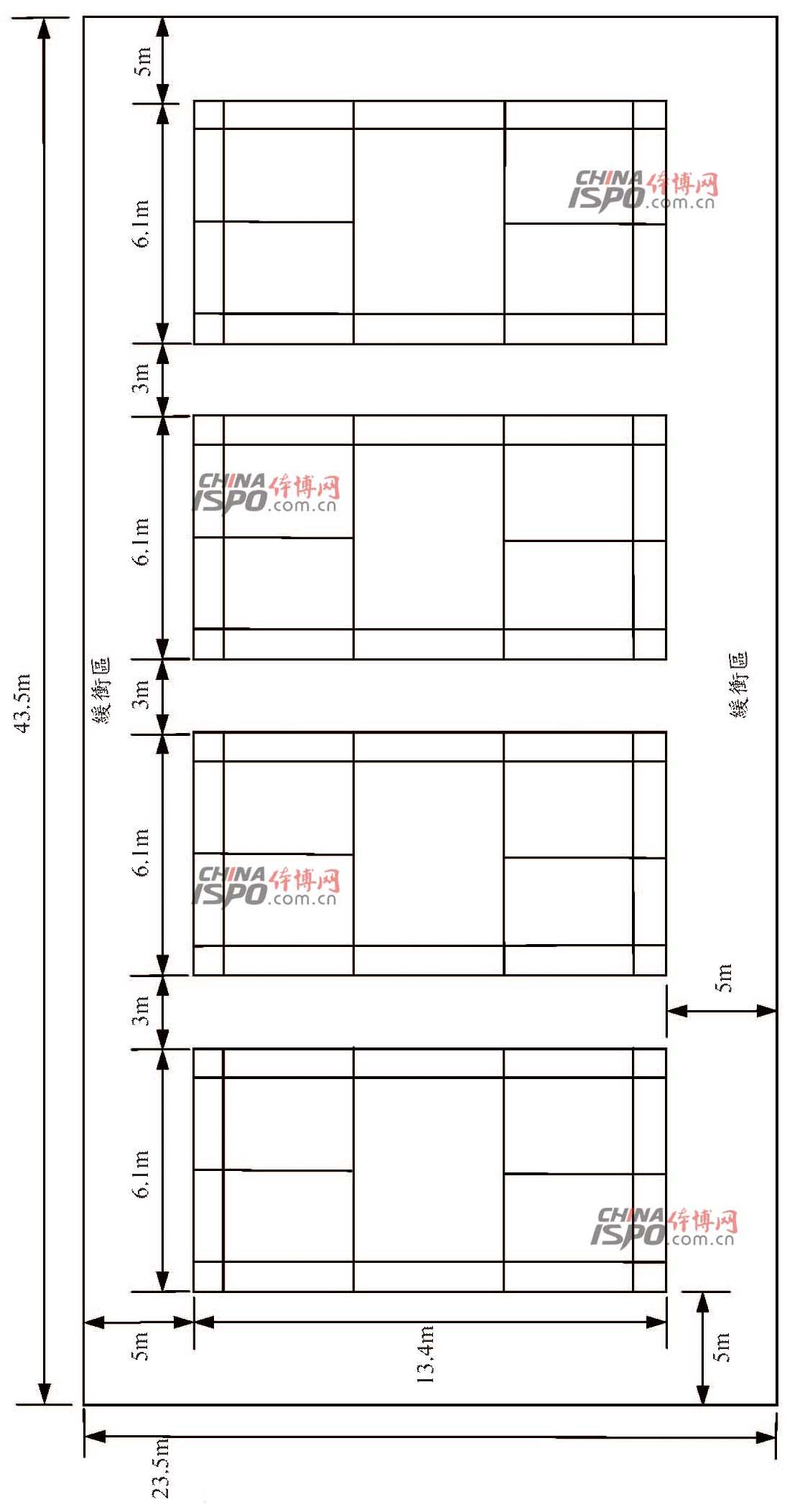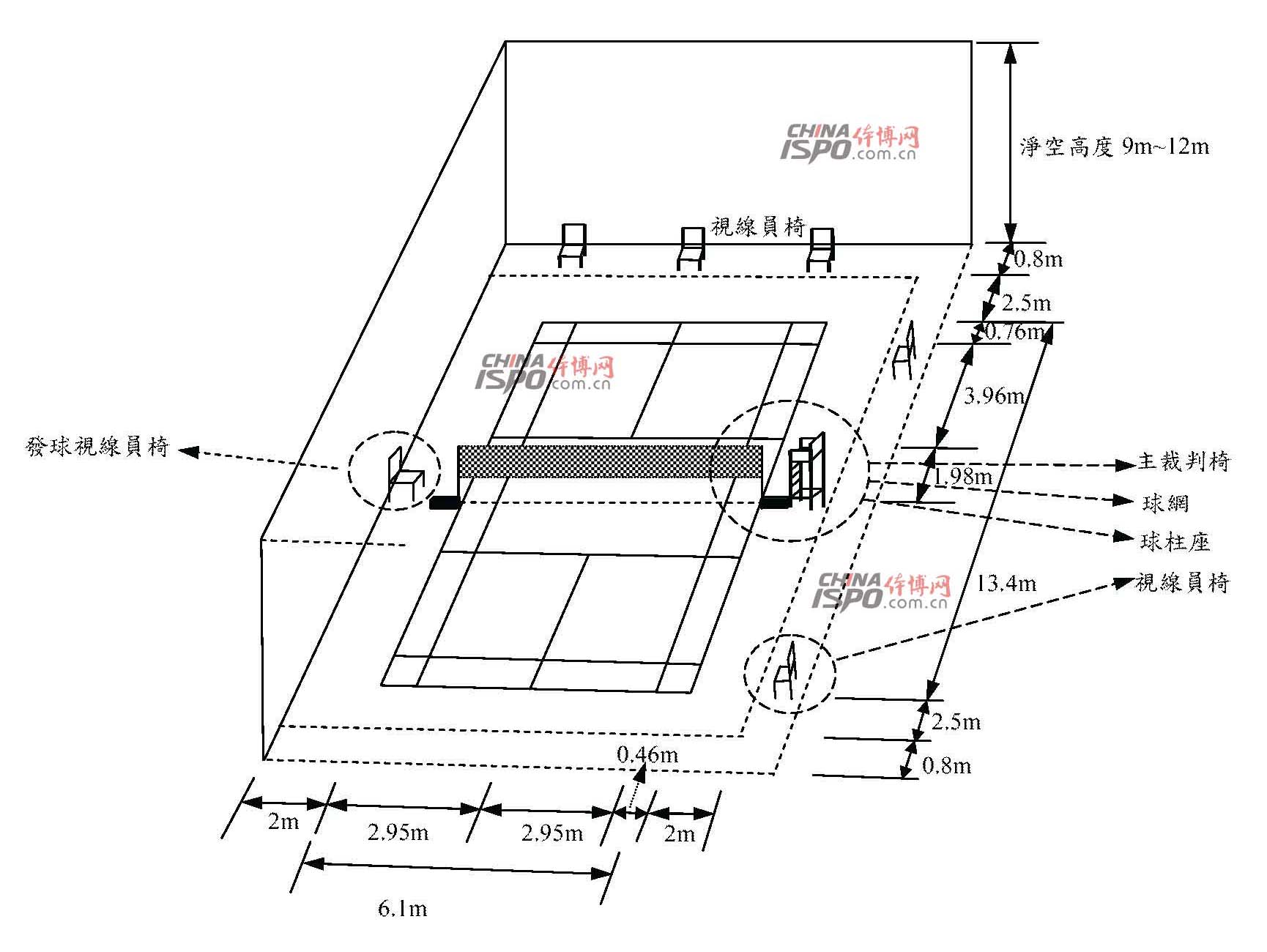Standard Badminton Court Size Structure
Foreword: The badminton sport is a very popular sport today. Although the court field is not large, each ball is hit back and forth quite a number of times. Therefore, the player can't stop and rest before the ball lands. Therefore, the intensity in the unit time is intense. No less than basketball or football. In the current competition, the International Badminton Association regulations must be carried out on conforming chemical mats. However, if it is used for leisure or practice, if elastic wooden flooring is used, the damage to the feet will be reduced. However, the planning of the badminton court should focus on whether the player is still clear about the rapid flight of the badminton. The material and color of the wall and the ceiling should be listed as one of the key points. Secondly, whether the scope and height of the stadium ensure a safe distance. And whether or not the lighting design produces glare is also a planning element. In general, there is a difference between a dedicated badminton court and a comprehensive stadium. A dedicated stadium can better meet the needs of players, and a comprehensive stadium cannot satisfy all the conditions. Therefore, the special badminton hall can use the side hanging lighting method and the wall surface as far as possible not light, it is best to use indirect reflective light source or reflective lighting. However, if the arena is to be used for badminton, the most important thing is the effect of direct light. It is better to arrange the lighting equipment to project outside the sideline to the inside of the field to avoid the main direction of light.
First, the origin of table tennis
The source of the badminton ball began in 1840. The British officer in Pune, India, inserted feathers into the cork of the bottle as a ball and tried to play it with wine bottles. Several of the Indian retired officers were in 1860 in Glasgow, England. At a banquet in Badminton, a champagne goose feather was used as a ball on a cork, and it was shot back and forth across the banquet table. It was widely loved by the British and quickly spread throughout the United Kingdom. Named after Badminton, the first game rule was published in England in 1877. Since officially becoming the type of Olympic Games competition in 1992, the badminton sport has been widely developed in various countries in the world. Currently, countries with higher technological standards include China, Indonesia, Malaysia, South Korea, Denmark, and the United Kingdom.
Second, the international standard badminton court standard specification:
Site standards
1. Stadium area (doubles):
1.1. Length: 13.4m (including line)
1.2. Width: 6.1m (doubles); 5.18m (single-play)
2. Line width: 40mm (white or yellow)
2. Line width: 40mm (white or yellow)
3. Distance around:
3.1. Outside the line: 5m
3.2. Outside the edge: 4m
3.3. At least 2.0m between two parallel courses
4. Total area (including peripheral buffers):
4.1 Single Stadium: 20m×14m
4.2. Two Parallel Courses: 20m × 18.6m (each stadium + 8.1m)
4.3. Course height: 12m (net area of ​​the entire area)
5. Illumination requirements:
5.1. General leisure use: 350Lux~700Lux
5.2. County and Municipal Events: 700Lux~1000Lux
5.3. International competitions: 1000Lux~1500Lux, 1800Lux if broadcast
Facility specification
1. Net column:
1.1. Height: 1.55m (from the ground, should be placed on the sideline of the doubles venue), 1.524m in the middle
2. The net:
2.1. Width: 0.76m
2.2. Mesh: 15mm~20mm
2.3. The height of the center of the net should not be less than 1.52m, and the two ends should be 1.55m. The edge of the net should be double-folded with a white cloth with a width of 76mm.
| All levels of events space table | |||
| International | County and city | Townships and clubs | |
| height | 12m | 9m | 9m |
| Full length | 20m (including buffers) | ||
| Stadium area (doubles venues) | |||
| length | 13.4m | 13.4m | 13.4m |
| width | 6.1m | 6.1m | 6.1m |
| Bottom line to wall (at least) | 5m | 2.3m | 5m |
| Edge to wall (at least) | 4 m | 2.2m~1.2m | 2.2m |
| Adjacent stadium (at least) | 2.0m | 2.0m~0.9m | 0.9m |
| Full size | |||
| One singles venue | 20m×14m | 20m×12m | 20m×10m (at least) |
| Two-sided venue | 20m×18.6m | 20×18.6m | 18m×16m (at least) |
| Increase at least one area for each additional area | +20m×8.1m | +20m×8.1m | +18m×7.0m (at least) |

Figure 1 Badminton court plan

Figure 2 Four badminton court layouts for the official competition
Third, the venue facilities
(a) The distance between the perimeter of the stadium and the wall should meet the safe size, and there should also be safe dimensions between the two venues.
(b) The height above the audience and the installation height of the luminaire should meet the specifications.
(C) The appropriate dark background color, so that the ball is clear and obvious, do not use a white wall or color.
(4) The special golf course adopts side hanging lighting to avoid glare; if it is a synthetic court, the lighting should project from the outside of the edge.
(5) Lighting fixtures should be arranged according to the position of the stadium. In general, fixtures should be installed at the periphery of the stadium. Another light should be on both sides of the court, and its design must be able to be set along with the direction of the court and be mobilized at any time (for example, changing the east-west direction to the north-south direction due to game demand), and the arrangement is parallel to the direction of the flight of the shuttlecock.
(6) Lighting design shall avoid flicker design.
(7) Appropriate ventilation and air conditioning design to avoid interference with the flight of the badminton.
(8) Avoid the hanging of the badminton ball on the roof structure or the upper edge of the wall, so as to prevent the structure in the hitting area from affecting the flight of the ball.
(9) Floors that are not slippery, regardless of the type of material used, should be kept slippery.
(10) At the time of international competitions, the court area shall be laid down with a floor mat of chemical materials. If it is a comprehensive course, generally use elastic wood flooring, synthetic rubber or PU material, and avoid using cement or terrazzo surface materials.
(11) The bottom line should be left behind as much as possible, and indirect light sources should be used if necessary. Ventilation method to the roof ventilation does not affect the flight of the badminton ball, if the use of blinds ventilation, installation location and color should also be considered. Avoid the use of white or light colors on the walls. The more uniform the colors, the better. The wall lights or emergency lights should also be arranged to avoid interference with the player's vision.
(12) The width of the ground of the feather court is 40mm, usually using white lines.
(Shiyan) Generally more formal competitions are held in larger integrated gymnasiums. Therefore, special floor mats need to be laid. The special floor mats for badminton are made of chemical materials such as PVC or rubber, and the paved area must be covered with the designated arena area. That is, the covered area should include the buffer zone specified.
(14) In order to allow the player to test the ball's flying position, it can be located on the single corner line on the corner of the court. At 0.53m and 0.95m from the baseline, each mark is marked with 40mm x 40mm.
(15) The general seat of the sight-seeker's seat is located behind the bottom line. It is better to have two rows of seats (20m plus 2m, ie 22m, with 20m+4m=24m at both ends).
(16) If wood flooring is recommended for clubs or badminton courts, in case of large-scale competitions, floor mats are used to reduce the chance of injury.
(17) The badminton referee chair should be at the same height as the post (1.55m).

Figure 3 Badminton court perspective
Related reading "Badminton serve rules badminton novice serve method"
Eva Toe Separators,Foam Toe Separators,Disposable Eva Toe Separators,Pedicure Toe Separators
Yangjiang Etina Houseware Co., Ltd. , https://www.stjsrobot.com